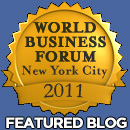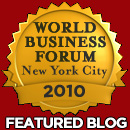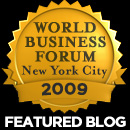Mar11
Andrea Meyer
Point: Use publicly-available photos to shed light on tourist delight
Story: Barcelona invested heavily to revamp the city to attract tourists for the Olympics and beyond. What places did tourists visit? What did they see and like? What did they tell their friends about? The city can measure tourism dollars, but the intangible experience of pleasure is harder to measure.
The Los Ojos Del Mundo (The World’s Eyes) project helps provide some answers. The project looks at the publicly-available photos on Flickr that people post of Spain. Using data mining and visualization techniques, team members from MIT’s SENSEable city lab plotted photos onto a map of Spain. The concentration of photos shows which places tourists deem most photoworthy and want to share with their friends.
Action: Consider what data is publicly available on your product, brand, or city. Flickr, Twitter and blogs are all rich sources of user-generated photos, opinions or reviews. Analyze which features or aspects of your product are displayed or mentioned. This data helps reveal how customers portray, experience or feel about your product.
For more information: See Los ojos del mundo (the world’s eyes) for full information on the project as well as additional photos, courtesy of http://senseable.mit.edu/worldseyes/press.html
Girardin, F., Calabrese, F., Dal Fiore, F., Ratti, C., and Blat, J. (2008). Digital footprinting: Uncovering tourists with user-generated content. IEEE Pervasive Computing, 7(4):36-43.
Girardin, F., Dal Fiore, F., Ratti, C., and Blat, J. (2008). Leveraging explicitly disclosed location information to understand tourist dynamics: A case study. Journal of Location-Based Services, 2, 1, 41-54.
For more on creative design and the field of information visualization: Information Aesthetics
Customers, How-to, Innovation, Metrics
Feb28
Andrea Meyer
Point: Measure innovation from a variety of lenses, not just one
Story: The Information Technology and Innovation Foundation (ITIF) conducted a 40-country study of innovation, ranking countries on competitiveness. The ITIF used 16 metrics grouped into 6 categories:
- Human Capital
* Higher Education Attainment
* Science & technology Researchers
- Innovation Capacity
* Corporate Investment in R&D
* Government Investment in R&D
* Share & Quality of World’s Scientific and Technical Publications
- Entrepreneurship
* Venture Capital
* New Firms
- Information Technology Infrastructure
* E-Government
* Broadband Telecommunications
* Corporate Investment in IT
- Economic Policy Factors
* Effective Corporate Tax Rates
* Ease of Doing Business
- Economic Performance
* Trade Balance
* Foreign Direct investment Inflows
* GDP per Working-Age Adult
* Productivity
Action: Translate these country-level metrics to your organization. For example, Human Capital metrics: the education level of your employees, the skills employees must have to meet customer needs; Innovation Capacity: how much do you invest in R&D or in innovation? How well do you understand your industry, technology and the specific markets where you compete? Entrepreneurship: do you encourage employees to suggest ideas? Do you have processes in place to evaluate and fund those ideas? IT Infrastructure: do you invest in IT and software to let your employees communicate and collaborate easily? Economic Policy: do you minimize barriers to innovation, like bureaucracy and silos? Economic Performance: how many innovations do you have per employee?
For more information, see the ITIF’s report The Atlantic Century: Benchmarking EU & US Innovation and Competitiveness
Innovation, Metrics, Productivity
Feb17
Andrea Meyer
Point: Use a simple formula to evaluate a design
Story: “Italian design” sparks images of beauty, the Renaissance, craftsmanship. Alessi, a leading Italian design firm, has been creating products for the home for three generations. CEO Alberto Alessi describes the company as an artistic mediator, bridging the highest possible expressions of product design with customer dreams. Given such intangible goals, how does Alessi access whether a new product design will succeed?
Alessi has a 4-part formula:
- Does it speak to the customer? (Do customers say “oh, that’s beautiful”?)
- Does it help the customer express a core value? (For example: simple yet elegant; uniqueness; earth-friendly)
- Function
- Price
CEO Alessi developed this formula after evaluating 300 of his firm’s products and asking why some were big successes and others were fiascoes.
Action: Look back over the portfolio of products or services that your firm has produced. Are there patterns in which ones succeeded and which ones failed? Use these commonalities to devise your own formula, or try Alessi’s.
For more information:
Interview with CEO Alberto Alessi in the McKinsey Quarterly
About Alessi: http://www.alessi.com/
Innovation, Metrics, New Product Development










